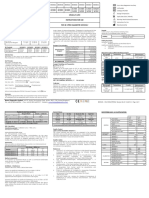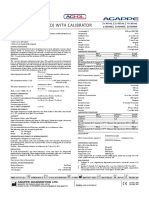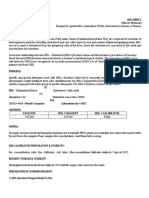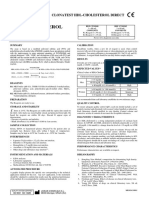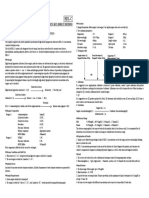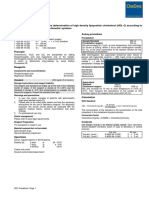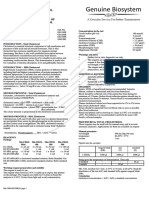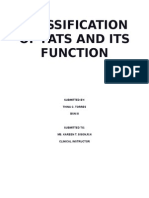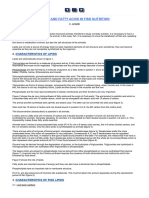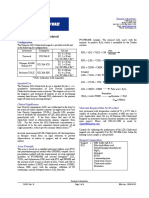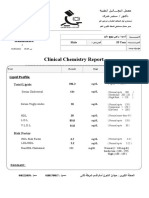0% found this document useful (0 votes)
55 views1 pageHDL Cholesterol Direct
The document provides information on the HDL-Cholesterol Direct test, which is used for in vitro diagnostic purposes to assess cholesterol levels and associated risks for coronary heart disease. It details the methodology, reagents, procedure, and safety precautions necessary for conducting the test, as well as reference values for different risk levels in men and women. Additionally, it includes guidelines for sample preparation, preservation, and stability of the reagents.
Uploaded by
Edymain Francis KouaméCopyright
© © All Rights Reserved
We take content rights seriously. If you suspect this is your content, claim it here.
Available Formats
Download as PDF, TXT or read online on Scribd
0% found this document useful (0 votes)
55 views1 pageHDL Cholesterol Direct
The document provides information on the HDL-Cholesterol Direct test, which is used for in vitro diagnostic purposes to assess cholesterol levels and associated risks for coronary heart disease. It details the methodology, reagents, procedure, and safety precautions necessary for conducting the test, as well as reference values for different risk levels in men and women. Additionally, it includes guidelines for sample preparation, preservation, and stability of the reagents.
Uploaded by
Edymain Francis KouaméCopyright
© © All Rights Reserved
We take content rights seriously. If you suspect this is your content, claim it here.
Available Formats
Download as PDF, TXT or read online on Scribd
/ 1













